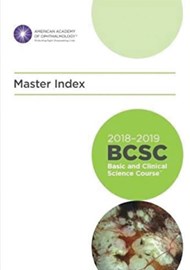The American Academy of Ophthalmology publish a series of books entitled Basic and Clinical Science Course every year. It’s a highly regarded series and has often been quoted to me as a good reference set of books. Indeed, I invested in the whole series back in 2012 when I was a bright-eyed junior doctor who wanted to pursue a career in ophthalmology.
If you need a more trustworthy reference as to whether or not it’s good, the European Board of Ophthalmology recommends these books for trainees who want to sit their annual EBO diploma exam and the books are on the Royal College of Ophthalmology recommended reading list for the FRCOphth part 1.
Every year the books will be updated if required to reflect new practice. What’s neat about this series is you can check on the website and it will tell you if one particular book has undergone major revisions, so you can just buy that one book and update your collection. The books are available as ebooks, or if you’re old fashioned like me, you can get a print version. It doesn’t matter which version you get; you get access to some online content.
The set for 2018-2019 included major revisions to three of the books: paediatric ophthalmology, clinical optics and the retina and vitreous books.
These textbooks really do utilise videos well. For the paediatric textbook you will be able to access 37 videos and animations which can show you examination techniques such as the cover test and Krimsky test. Within the retina and vitreous book there are 10 surgical videos scattered throughout. Even the clinical optics textbook has some videos to help demonstrate some of the concepts and techniques that have been explained, e.g. a fun animated video explaining retinoscopy. The videos are often produced by one of the editorial committee for that book, e.g. Thomas Mauger for clinical optics, or Colin McCannel for retina and vitreous. What’s particularly nice is even if you have the hard copy of the book you can just scan the QR codes on your mobile and watch the video as you go; great if you’re too lazy to look them up online later. They are genuinely really helpful and can help consolidate information you’ve just read. I find it can be difficult to visualise a surgical technique and the videos explain them beautifully. At the beginning of each chapter it states whether there are associated videos, and also gives the link where you can access them online, which is good if you want to quickly flick back to a video.
The paediatric and retina textbooks are so accessible to both junior and more senior trainees. Each book will cover the basics of what you need to know (I guess the clue is in the title of the series…) such as anatomy, physiology and investigations. They’re also great for examinations as they cover the key clinical conditions succinctly. There are also study questions at the end of each textbook so you can test your knowledge, and activities you can do as well (again accessible via QR codes or mentioned at the beginning of the chapter). For the real keen beans there’s also a separate online self-assessment guide that you can buy with over 2100 questions.
Clinical optics is probably more suitable for the optometrist or junior trainee looking to sit their part 1 examination. It is very detailed and goes into more depth than I expected it to. If you’re struggling with optics this is a good textbook to try and help supplement your reading. It is not as intimidating to approach as it has plenty of brightly coloured diagrams to help break up the text and videos are very helpful too.
All the textbooks have a nice layout and they’re easy to navigate. They’re great to carry around with you when you’re working in a particular subspeciality – they’re pretty hardy so wont become dog-eared if you keep them in your bag. Normally I feel the need to read things through a couple of times and make some notes before I feel like I’ve absorbed anything. These are probably the first few textbooks where I’ve felt more confident and knowledgeable after a quick read through. A large part of that is to do with the videos and activities. I particularly enjoyed the retina and vitreous textbook; although that may just reflect my bias towards retina in general! Buying the whole series might feel a bit expensive but I do think it’s worth it. If you’re not sure you can buy the books individually depending on what you’re doing or what you’re interested in. I know I will slowly but surely be updating my own collection. The 2019/2020 textbooks are already out with major revisions to four books in the series and I’m excited to get hold of them.




